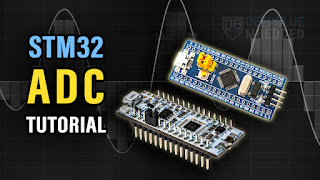What is hardware-based encryption, and how is it integrated into SoCs?
What is Hardware-Based Encryption?
Hardware-based encryption means cryptographic operations (AES, RSA, ECC, SHA, etc.) are executed directly in dedicated circuits rather than in software on a general-purpose CPU.
Key Features:
-
Dedicated Crypto Engines: Specialized blocks handle encryption/decryption at high speed.
-
Lower Latency: No CPU instruction overhead, faster than software libraries.
-
Power Efficiency: Optimized silicon consumes less energy per operation.
-
Security Hardening: Resistant to software attacks, some designs include anti-tamper and side-channel countermeasures.
Integration of Encryption into SoCs
Modern SoCs (e.g., used in smartphones, IoT, automotive, industrial MCUs) integrate encryption in several ways:
1. Cryptographic Accelerators
-
SoCs include AES engines, SHA hash units, RSA/ECC accelerators.
-
The CPU offloads cryptographic workloads (like TLS handshakes, secure boot).
-
Example: ARM Cortex-M SoCs with CryptoCell, NXP i.MX with CAAM (Cryptographic Acceleration and Assurance Module).
2. Secure Key Storage
-
One-Time Programmable (OTP) fuses or eFUSEs store unique device keys.
-
Hardware Security Modules (HSMs) or TrustZone Secure Enclaves isolate keys from normal software access.
-
Keys are injected at manufacturing and never exposed to the OS.
3. Trusted Execution Environment (TEE)
-
Some SoCs (like ARM-based) partition resources into secure world (for cryptography, secure boot) and normal world (for apps).
-
Crypto operations happen inside TEE using hardware-isolated memory regions.
4. Boot and Firmware Security
-
Secure Boot: SoC verifies bootloader/firmware signatures using embedded crypto engines before execution.
-
Firmware Updates: Encrypted + signed, validated by hardware before flashing.
-
Prevents malicious firmware injection.
5. On-the-Fly Encryption
-
Memory Encryption: SoCs encrypt data in RAM/Flash dynamically (protects against cold-boot or bus-sniffing attacks).
-
Storage Encryption: NAND/eMMC/SSD interfaces include inline AES-XTS engines.
-
Network Security: Hardware TLS/IPsec offload for IoT, automotive, and networking SoCs.
Example Applications
-
Smartphones → ARM SoCs use hardware AES + TrustZone for secure payments (Google Pay, Apple Pay).
-
IoT Devices → Low-power SoCs integrate crypto accelerators for secure OTA updates.
-
Automotive SoCs → Hardware-based MACsec/IPsec modules for secure vehicle-to-everything (V2X) communication.
-
Data Centers → Hardware-based encryption in CPUs (Intel SGX, AMD SEV) to secure VM workloads.
Summary
-
Hardware-based encryption = cryptography performed in silicon, not software.
-
In SoCs, it is integrated as:
-
Crypto accelerators (AES/SHA/RSA/ECC blocks).
-
Secure key storage (OTP/eFUSE, enclaves).
-
Secure Boot + firmware validation.
-
Inline memory, storage, and network encryption.
-
-
This ensures speed, efficiency, and tamper resistance, which are essential for security-critical systems (phones, cars, IoT, servers).




评论
发表评论